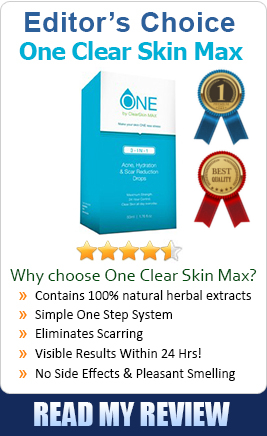An Easy Grading of Acne
Acne has no timeline for its occurrence. Neither can anyone predict its coming. Acne can start as a small innocent-looking red dot on your skin. It can blossom into a terrifying unstable skin condition which can lead to permanent scarring. So in order for any event to take place, it has to start small. So is the case with acne. The degree or the severity of the signs and symptoms of acne can be easily classified into three main stages or grades.
Mild acne

Mild Acne
Whiteheads and blackheads fall into this category. Mild acne is non-inflammatory acne and is also known as comedones. A comedone is a plug of sebaceous and dead skin cells and oil stuck in the opening of a hair follicle under the surface of the skin. An open follicle is a blackhead and the closed one is a whitehead.
The blackhead gets its colour from the oxidation of melanin, as a result of undergoing a chemical reaction. Melanin is a pigment found in most organisms which is stimulated by DNA damage induced by UVB-radiation. Their openings are generally wider than normal.

Blackheads

Whiteheads
Whiteheads which are closed comedones, only have microscopic openings. As a result, air cannot reach the follicle and oxidation does not take place which is why it remains white.
Since all these plugs are beneath the skin, scrubbing will not get rid of them. Rubbing the skin or using harsh and abrasive soaps can lead to further irritation of the skin and can worsen the mild acne. And this mild acne can transform to the next stage of a moderate one.
So, wash your face gently and regularly with mild facial cleansers and you will be rid of those black and white heads. Mild acne usually does not leave behind any permanent marks on the skin.
Moderate to moderately severe acne

Moderate Acne
Acne in moderate forms is inflammatory. They usually consist of several whiteheads, blackheads, papules and pustules. As compared to mild ones, their openings are larger and cover more areas on the face and other parts of the body.
The line between mild acne to a moderate one is usually difficult to read. The transformation from mild to moderate acne happens when cysts and lesions start to set in.
If mild acne is left untreated, it already has laid the foundation for further bacteria growth. Some reactions take place which leads to the follicle walls becoming fragile and as a result ruptures and the contents flow out. This increases inflammation and will contaminate the surrounding area.

Papules
Papules are inflamed, usually red and tender conical bumps with no visible fluid. They are painless are considered as a
middle step between non-inflammatory and inflammatory lesion.
Pustules are a small collection of pus in the top layer of the skin. They frequently form in the sweat glands or hair follicles. They are tender and most of the time painful upon contact.

Pustules
These inflammatory acne types can be cured with some antibiotic lotions or gels, as well as retinoic acid. Retinoic acid, which is an altered form of vitamin A, helps to prevent whiteheads and blackheads.
Antibiotics can also come in the form of pills called erythromycin. This is usually administered by a doctor and caution needs to be taken if you are taking birth control pills to prevent pregnancy as they can affect how well they work.
Retinoic acid and antibiotic pills make the skin very sensitive to the sun. So its best that you stay in the shade while using them or apply sunscreen if you really need to be under the sun.
Severe acne
Severe acne happens when the nodules and cysts are severely inflamed. It consists of a mixture of inflammatory and non-inflammatory lesions, usually characterized as reddened pustules and possibly cystic lesions over 0.5cm in diameter with a soft top losing inflammation widespread. This kind of severe skin condition if left untreated could lead to permanent scarring.

Severe Acne
Severe acne itself has multiple types of which acne conglobata is one of the most severe. When you start experiencing severe acne, you have to seek professional help in a dermatologist.
Topical treatment will not be effective or sufficient to treat severe inflammatory acne as it cannot penetrate deep enough through the skin’s surface to reach the troubled area.
Systemic treatment which is oral is needed for severe skin blemishes. These therapies cause distribution of the drug administered throughout the entire organism. The dermatologist will prescribe oral antibiotics and contraceptives after taking a skin test. For large inflamed cysts, injection of anti-inflammatory steroid is required to reduce the swelling, irritation and redness and promotes the healing process.
Isotretinoin is a well-known oral drug used to treat severe cases of adult acne. But its best to avoid this medication for women who are pregnant as it will have severe birth defects to unborn fetuses.
Failure in attempting to seek early treatment usually leads to this kind of rare severe forms of acne. But most of the time, acne can be treated by using natural or herbal therapies or supplements.
One fine example is Help: Clear Skin which is why I’m promoting it. It’s a natural and organic acne solution that can be used effectively to cure mild, moderate and severe forms of adult acne. The best part of this system is the presence of Praventin which is clinically proven as a bioactive protein and rich in lactoferrin. This helps to reduce the production of bacteria.it even prevents your skin from scarring and offers complete rejuvenation of your skin to be as good as new.



